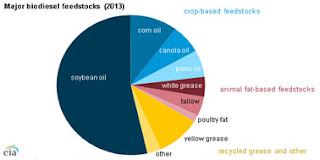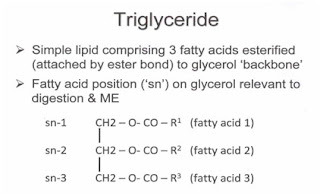General Guidelines for Bio Security and Checklist as per Central Poultry Development Organisation (CPDO).
(reproduced )
Indicative quick checklist for Implementing as effective Poultry Bio security plan.
Implementing any of these suggestions will reduce the risk of disease entry. Each additional step implementation will further reduce biosecurity risks.
· Secure perimeter; Keep “restricted” signs posted at drive entrances
· No trees or dense foliage around sheds, no roosting site for wild birds
· Restrict entry to essential personnel and record entry.
· Keep poultry houses locked; fasten from inside while inside.
· Provide boots and coveralls for staff and visitors for each shed.
· Staff should change into dedicated/disposable boots and coveralls upon entering each different shed. Clean footbaths may be appropriate within a shed if changed regularly.
· When caring for flocks, the resident flock manager should keep clothing (including shoes, boots, hat and gloves) separate from those worn off the farm.
· After caring for the flock, change clothes completely and wash hands and arms before leaving premises.
· Flock manager and other caretakers should not visit any other poultry flocks.
· If possible, provide show facilities for visitors.
· Remove poultry mortality daily. Store or dispose of them in an approved method.
· Ensure staff and visitors are aware of the dangers of raising or visiting other avian species and their contact with your flock.
· Essential visitors such as owners, meter readers, service personnel, fuel and feed delivery drivers, and poultry catchers and haulers must wear protective outer clothing, including boots and headgear, before being allowed near the flocks.
· Monitor vehicles entering premises for poultry pickup or delivery, feed delivery, fuel delivery, etc., to determine if they have been scrubbed down and the undercarriage and tires spray-disinfected before entering.
· Minimize entry of equipment, supplies, etc. and take appropriate precautions such as disinfection, removal from shipping boxes, etc.
· Clean and disinfect all coops, crates and other poultry containers or equipment before and after use.
· Maintain a strong vector control program for insect, mammalian and avian vectors. Maintain bait stations, clean up feed spills, prevent entry by wild animals (rats, birds, insects) or pets (dogs, cats). Use screens in windows, air inlets, doors feed bin exhausts etc.
· Maintain minimal vegetation and no debris around poultry facilities to lessen food and shelter opportunities for vectors.
· Ensure that feed, water and bedding sources are free from infectious agents.
· Review your biosecurity plan and flock health program, including vaccination protocols, with veterinarian on a regular basis.
· Sick or dying birds should be sent to a state laboratory for diagnosis. Commercial growers should contact their flock supervisor.
Farm Location and Design:
Poultry farm maintaining the valuable germplasm should ideally be located at a well isolated site away from other farms. It should be located away from water bodies that can be source of water for wild birds and animals and these wild birds and animals and these wild birds ultimately may become source of infection to birds maintained in the farm. Ideally it should be located at least 1-2 km away from other commercial facilities.
· The perimeter of the farm and hatchery must be secured with boundary wall and other measures.
· SOP’s(Standard operating procedures) of Biosecurity must be displayed in regional and local languages at every different species unit.
· Sign boards indicating ‘Biosecurity area’, ‘visitors are not allowed’ are to be displayed at breeding stocks and hatcheries of each species.
· The farm should be designed in such a way that it has sufficient ventilation and should have access to sunlight. This will be necessary for reducing the build-up of infectious agents in poultry house apart from reducing the stress of accumulated gases.
· Direction of long axis: This depends on geographical location of the farm. If the farm is located in cold region then the direction of long axis should be North-South. If the farm is located in hot and humid condition then it should be East-West, if the farm is located in region with very high temperature in summer months, then long axis should be South-East.
· Overhanging branches of trees over run-area of poultry like turkey, ducks etc. should strictly be pruned/ removed to avoid falling of droppings of feral birds. Ideally no dense foliage and trees should be there.
· Ensure bird-proofing nets in all units to prevent entry of small feral birds into sheds
· Cover any open drains to avoid attraction of wild animals.
· There should be no roosting site for wild birds
· There should be proper drainage facility and water should not stagnate.
· Houses should be provided with concrete floor for easy and proper cleaning.
· Foot dips of uniform size must be provided at the entry of all the poultry sheds and preferably use 50% lime powder + 50% Bleaching powder
· Ideally, lay out of the farm should be such that at farm entry point brooder shed should be followed by shed for growers and lastly for adult birds. Similar pattern should be followed for drainage system also from brooding to adult shed.
· Hatchery should be located at least 500 ft. away from other sheds.
· Bird reflectors may be used.
· From biosecurity point of view, distance between two different sheds of same type should be 30 ft. and of different type should be 100ft.
· Roads should be of concrete material so that transport of organisms with shoes and tyres can be reduced.
· Facility for post-mortem examination near to the incinerators and separate laboratory with suitable facilities and manpower are also required for regular monitoring and surveillance of diseases at the farm level.
· There should be single window system for sale of all poultry & poultry products with sale counter at gate. Client and their vehicle should not be allowed in any case to visit farm or hatchery.
· The Sale Counter for the sale of poultry & hatchery products should be arranged at the entrance gate to avoid entry of commercial vehicle in the campus.
· Farmers' Hostel/ training room etc. which is located near farm shed must be shifted away
· One demonstration shed may be constructed near the laboratory side for demonstration regarding poultry and other avian species to the poultry farmers and other trainees.










































